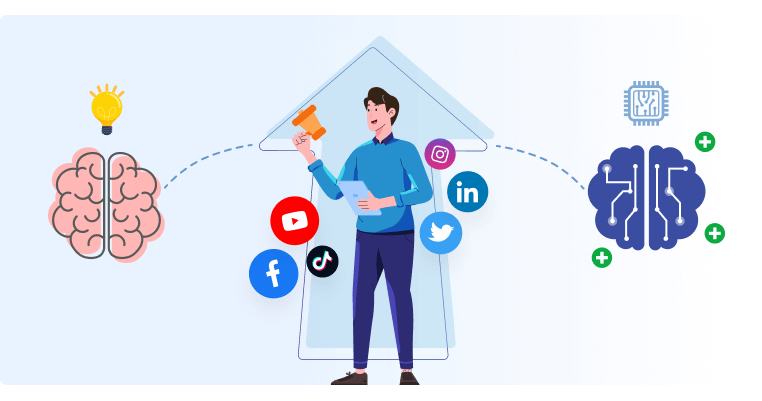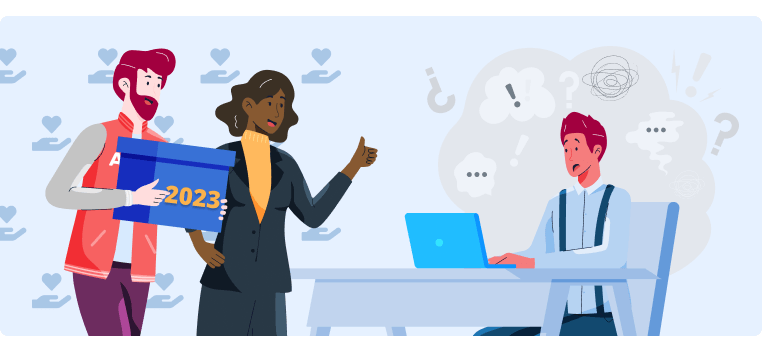The Best List of Current Branding Statistics for 2024
Companies like Nike, Dove, and Coca-Cola have a massive advantage over their competitors – strong brand recognition. Their logos are instantly recognizable, their slogans memorable.
When we shop for a product, we’re more likely to purchase a brand we recognize. You’re thirsty: do you grab a Coke, or an off brand soda? You grab the Coke, right? But why do you gravitate toward that shiny red can? Well, Coca-Cola has created a buzz of brand awareness.
To help you level up your branding efforts to get that same strong brand recognition, we’re sharing some insightful branding statistics. Use them to help guide your 2024 branding strategy.
How much should a business spend on branding?
-
Most companies spend between 10-20% of their marketing budget on branding or rebranding.
-
71% of businesses with annual revenue of less than $500,000 have a monthly branding budget of $100-$500.
-
57% of small businesses will pay $500 for a company logo and about 18% will pay up to $1,000 for a logo.
-
Only 14% of small businesses will pay more than $1,000 for a company logo.
-
Companies with $3M-$5M revenue spend $501-$1,000 per month on branding.
How much should a startup spend on branding?
- The average cost for startup branding executed by a freelancer or small design firm is between $5,000-$20,000.
- Larger firms charge approximately $30,000-$80,000 for startup branding.
How much are branding packages?
Depending on a brand’s needs, branding packages will range from $2,000 - $75,000. Packages will typically include a logo and visual identity, style guide, plus the option of other add-ons.
How much does it cost to get a logo?
Small businesses will spend anywhere from $300 to $1,300 on a logo design.
How long does it take to do a rebranding?
The average rebrand takes four months. This is an average estimate. It could take less time or even more depending on the scope of work, resources available, and whether it's a brand overhaul, a partial rebrand, or a brand refresh.
How much should I budget for rebranding?
- For small businesses or businesses with straightforward needs, rebranding can cost between $30,000-$50,000.
- Mid-market businesses or fast-growing companies can spend between $60,000 - $80,000 on rebranding.
- Enterprise businesses or global companies will spend $100,000-$250,000 on rebranding.
What are the most common branding challenges?
These are the most common branding challenges experienced by a majority of U.S. and Canadian businesses. Based on a scale of 1-6, with 1 being the biggest challenge, they are:
-
Adapting to changing customer needs (3.1)
-
Limited time and resources (3.2)
-
Not enough brand visibility (3.3)
-
Too many competing brands (3.3)
-
Negative online reviews (4.1)
Is brand recognition important?
Yes, it’s incredibly important to a company’s success! A study by HubSpot found that direct traffic is the top source of website traffic, suggesting that brand awareness plays a major role in a company’s audience reach. In fact, their study found:
- 50% of consumers are more likely to buy from a company whose logo they easily recognize.
- 39% of marketers say their primary goal for a social media strategy is to increase brand awareness and reach new audiences.
How do you achieve brand recognition?
Here are two ways you can achieve brand recognition:
- Create an attractive logo and visual identity. 75% of consumers remember a brand by its logo.
- Use a striking signature color in your logo. This is why 95% of the top 100 brands use only one or two colors in their logo.
Is brand trust important?
Yes! Brand trust directly impacts a consumer’s purchasing behavior.
- 81% of consumers say brand trust is a deciding factor when making a purchase decision.
- 46% of consumers are willing to pay more for a brand they trust, up from 30% in 2021.
What makes people trust a brand?
According to Edelman, there are three key factors that make people trust a brand. They are:
-
Consistently high quality products and services. 73% of consumers say they trust brands that deliver high quality products and services.
-
Positive ratings and reviews. 57% of consumers say they trust a brand based on its reviews.
-
Fair pricing. 49% of consumers say they trust brands that charge fair prices for products and services.
Should brands be more transparent?
Yes, brands should prioritize transparency because:
- 66% of consumers think that transparency is one of the most attractive qualities of a brand.
What is the importance of a good brand experience?
80% of customers agree the experience a brand provides is just as important as their products and services.
- 91% of consumers are more likely to make a repeat purchase after a positive experience.
- 71% of consumers say they've made a purchase decision based on experience quality.
How does brand consistency improve sales?
- 68% of companies report that brand consistency has contributed 10% to more than 20% of their revenue growth.
Do customers care about personalization?
Yes, customers care deeply about personalization.
- 52% of consumers report that they expect offers to always be personalized.
- 66% of customers expect brands to understand their needs and expectations.
- 70% of U.S. consumers are more likely to buy from a personally relevant product page.
- 31% of shoppers have left an e-commerce site without making a purchase because it wasn't personalized enough.
How many customers want personalization?
- 80% of consumers are more likely to do business with a brand that offers personalized experiences.
- 75% of online shoppers say they prefer a personalized experience.
What percentage of consumers are more likely to purchase from a brand that offers personalization?
- 72% of consumers say they are more likely to buy from a brand if it consistently offers personalized experiences.
How much does personalization increase sales?
According to McKinsey & Company, personalized offers can increase a company’s revenue by 10-15%. In fact, companies that prioritize personalization generate 40% more revenue than brands that don’t.
How many companies use personalization?
- 89% of digital businesses are investing in personalization.
What does personalization mean to customers?
Here’s how customers define personalization:
- Relevant coupons, discounts, and rewards. (31%)
- Recommendations based on past purchases and preferences. (22%)
- Helpful and personable customer service. (20%)
- Convenience of saved information like habits and preferences. (19%)
Brand awareness is a key goal for many marketing initiatives
A 2022 survey conducted by HubSpot found that the most commonly mentioned primary goal for social media marketing (39%) and video marketing (22.4%) was increasing brand awareness.
The HubSpot survey also found that the main goal for influencer marketing campaigns is also to drive brand awareness.
Why is brand connection important?
Brand connection is important because it drives more revenue. Statistics show that:
- Fully connected customers are 52% more valuable than those who were just satisfied.
- Emotionally connected customers account for 37% of revenue and spend twice as much annually.
How do you connect people with your brand?
You can use content marketing to create a brand connection.
- 70% of consumers feel closer to a brand as a result of content marketing.
- 82% of consumers feel more positive about a brand after reading custom content.
- 60% of consumers will seek out a brand after reading content about it.
What are the most popular social media platforms for brands to connect with customers?
Facebook is still the most popular platform for consumers to connect with brands.
- 71% of consumers anticipate using Facebook in the next 12 months, followed by YouTube (51%), then Instagram (49%), with TikTok (38%) not too far behind.
Does social media influence buying behavior?
Yes, social media influences buying behavior.
- 77% of consumers would buy from the brand they follow on social media over another.
- 38% of Gen-Z consumers say that social media is the number one way they prefer to discover new products. This same study indicates that 50% of Millennials have also discovered new products on social media.
- 11% of consumers will ask social media connections for advice on what to buy.
What percentage of people would buy a product they find on social media?
- 36% of U.S. consumers bought products they found directly on a social media channel in 2021.
What types of content do consumers want to see from brands?
Here are four types of content that consumers want to see on a brand’s social media.
- Authentic Content
- 34% of consumers want authentic, less produced videos.
- 88% of consumers say authenticity is important when deciding which brands to support.
- 14% of consumers want authentic behind-the-scenes content.
- 91% of consumers want brands they follow to be authentic in their posts.
- User-Generated Content (UGC)
- 39% of consumers want to see posts with customer testimonials.
- 59% of consumers say UGC is the most authentic form of content.
- 80% of global consumers would be more likely to buy from an online store if its website featured more UGC images and videos.
- 59% of consumers believe content created by other consumers (UGC) is more authentic, compared to 10% who believe influencer-generated content is authentic.
- Product Related Content
- 60% of consumers enjoy reading relevant content from brands.
- 90% of consumers find custom content useful.
- 70% of consumers would rather learn about a company through articles than ads.
- 51% of consumers want to see posts highlighting a brand's products or services.
- 50% of consumers follow a brand to learn about products and services.
- Entertaining and Inspiring Content
What type of content is the most engaging on social media?
Below is a list of the most engaging type of content on social media:
Why do consumers unfollow brands on social media?
- 56% of consumers unfollowed a brand because of poor customer service.
- 51% of consumers unfollowed a brand for posting irrelevant content.
What percentage of people trust peer recommendations?
92% of consumers trust peer recommendations.
How do customers show brand loyalty?
- 60% of customers will share a brand they love with friends and family.
- 52.3% of customers will join a loyalty or VIP program.
- 39.4% will spend more on a brand they're loyal to, even if there are cheaper options.
What percentage of sales come from loyal customers?
65% of a company’s sales come from existing loyal customers.
What influences a consumer's decision to buy from a brand?
Below is a list of reasons that influenced consumers' decisions to buy from brands:
- 94% of customers are influenced by how a company treats its customers.
- 85% of consumers say it's the way companies treat their employees.
- 78% value a brand's environmental practices, while 75% of consumers look at a brand's actions on economic injustices.
- 52% of consumers will buy from a brand if the brand stands for something bigger than just the products and services it sells, which aligns with their values.
- 62% will buy from a brand if it has ethical values and demonstrates authenticity in everything it does.
- 60% of Gen Z have chosen a product based on it being owned by a small business compared to 59% of Millennials.
Why do consumers pay more for a brand?
13% of customers would pay between 31-50% more for a brand's products and services if they felt they were making a positive impact in the world.
How likely are consumers to switch brands?
With more options being available, 71% of customers switched brands at least once in the past year.
Final Thoughts
When your branding is on point, the statistics prove branding’s strong impact on a company’s bottom line.
We recommend making branding a top priority for your business in 2024.
If you’re looking for new ways to increase brand awareness, consider implementing an employee advocacy program. You can learn more about the benefits of employee advocacy and how to launch an employee advocacy program with our guide on the subject.




















